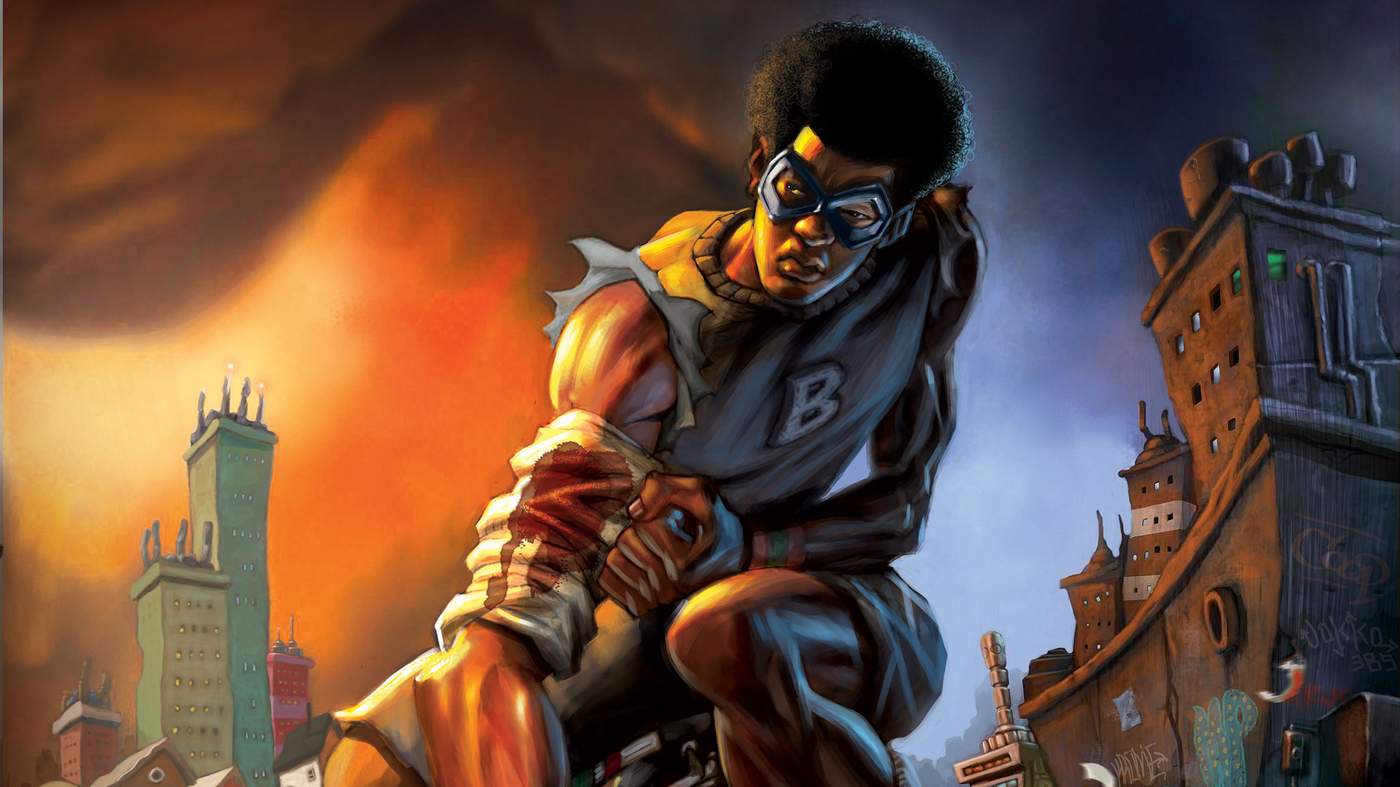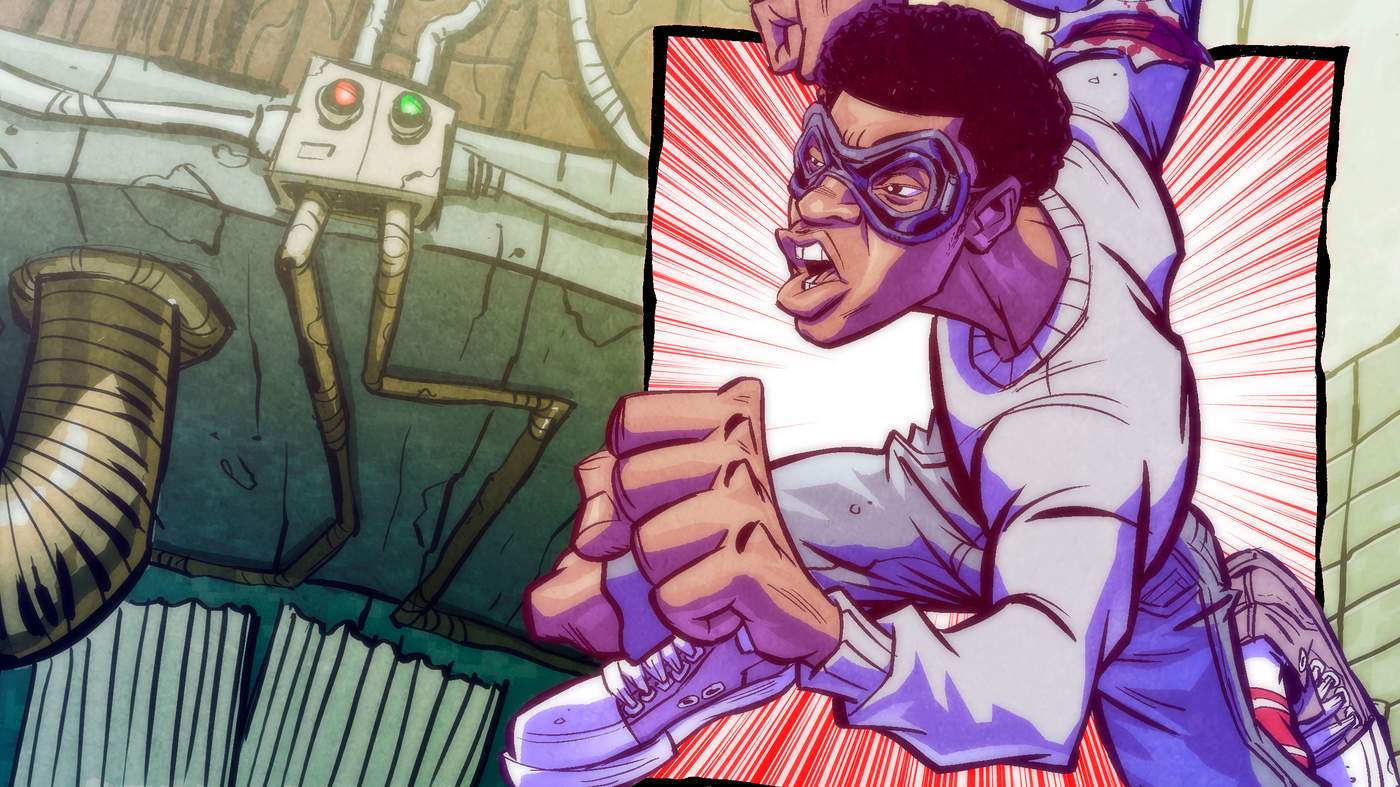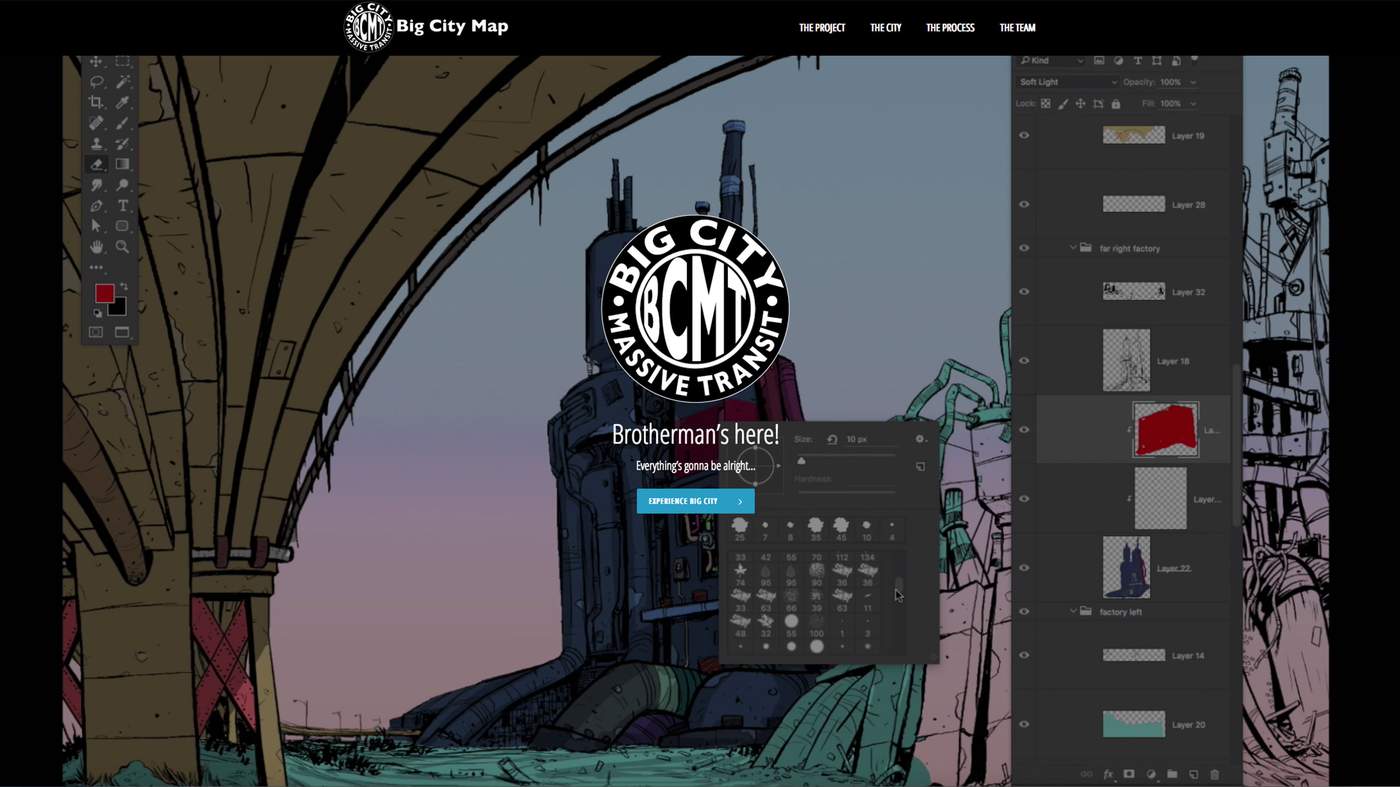In 1990, Dawud Anyabwile and his brother, Guy A. Sims, created "Brotherman," one of the first comic books to feature a black hero set in a mythological world of black characters. Almost three decades later, with help from Emory University's digital scholars, this groundbreaking text is being reimagined for a new generation.

"Brotherman" artist Dawud Anyabwile
Dawud Anyabwile – then David Sims – grew up in Philadelphia wanting to be an artist. What began with finger painting in kindergarten and watching his oldest brother draw monsters and animate cartoons in their basement in 1971 turned into a lifelong career.
"I was always intrigued with cartoons, animation and creativity and it was also cultivated in our home," Anyabwile recalls.
Now that creativity has another home at Emory University's Center for Digital Scholarship (ECDS), where a team led by Clinton Fluker, ECDS’s outreach coordinator, has been working to bring Anyabwile and his brother Guy Sims' "Brotherman" comic book off the page and into the world of virtual reality.
Anyabwile, who lives in Atlanta, worked with the ECDS team on Emory’s Big City Map Project, a digital reading comprehension prototype that launched Aug. 17 with the aim to change the way we read and teach literature.
"I was first exposed to 'Brotherman' when I was at Morehouse College, but I never really paid it much mind," says Fluker. That is, until he went to Emory's Laney Graduate School for a PhD in the Institute for Liberal Arts. As Fluker studied black speculative fiction, "Brotherman" showed up time and time again.
"I read all of the material and was amazed by the wit of the writing and the stunning visuals," he says. "Sims and Anyabwile truly are a dynamic team that has had a major influence on independent comic books."
When Fluker wanted to meet the creators to see about opportunities for collaboration, a mutual friend put them in touch.
"I met Clint in 2015 when I was working on the all new 'Brotherman: Revelation' graphic novel," Anyabwile says. "I was showing him the process as I was drawing it. We eventually began to discuss possibilities within this Black Comix scope, not knowing that one day he would ask me to partner with Emory University to develop the Big City Universe. That was like a dream come true."
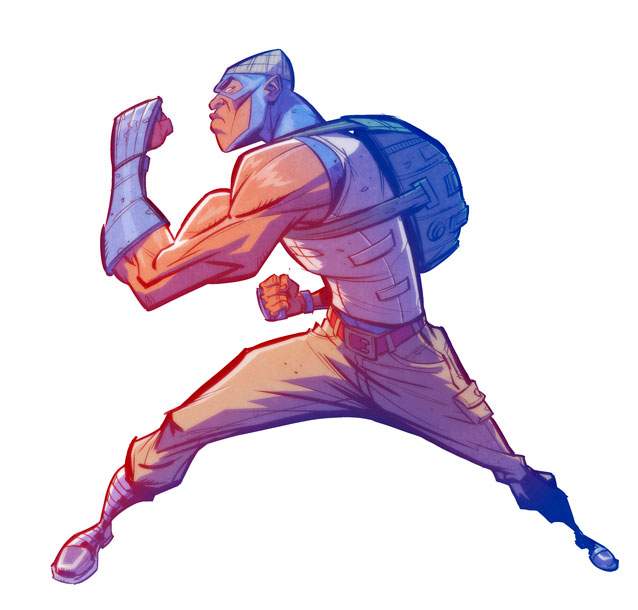
He's the superhero, but not the only star of the "Brotherman" comic series: The fictional Big City shines, too.
The Big City Map Project came about because Fluker realized the main character of the "Brotherman" series is not, in fact, the hero, Antonio Valor, but rather the fictional backdrop of Big City.
When it comes to the world of Big City, the talent and skill on the page is unmistakable. Anyabwile's expert hand makes Gotham City look like child's play.
The streets are familiar yet menacing, and in reading it you can't help coming to recognize it in many ways as your own home, a town you'd like to see protected no matter the cost.
"Big City is what grabs the reader from the very first panel," says Fluker. "The amount of detail and care that goes into the visuals of this crowded metropolis is astounding."
This multilayered city would become the perfect tableau for Emory to create a virtual reality (VR) world for the text, resulting in a prototype that explores the possibilities of using GIS mapping and other immersive techniques to highlight the creative process associated with developing fictional worlds.
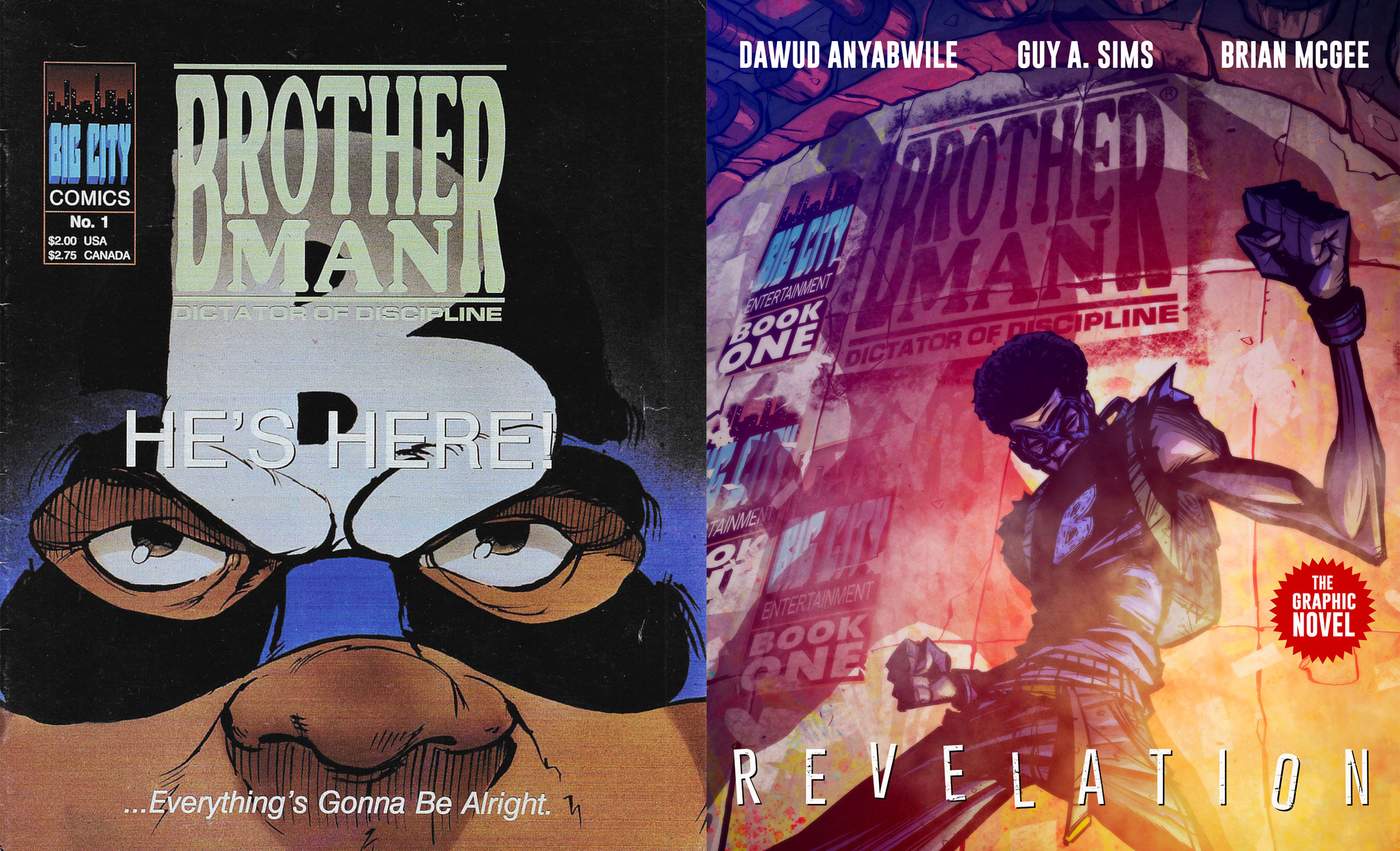
The evolution of "Brotherman": The cover of the first issue, published in 1990, and the graphic novel, published in 2015
The beginning of a movement
As a boy Anyabwile could always be found doodling and jotting down sketches in his notebooks. Yet he wasn't the only creative person in the family. His brother, Guy A. Sims, says he has been a writer "for as long as I can remember."
"My mother reminded me that I was a storyteller as early as the second grade," says Sims, who now lives in Blacksburg, Virginia, with his wife and three kids. Sims is the author of several works including all 11 issues of "Brotherman"; five spin-off novels featuring the character Duke Denim; an adapted version of the graphic novel "Monster,” written by Walter Dean Myers; and a novel, "Living Just a Little," published in 2015.
"My parents, through their encouragement, helped me to grow, not only as a writer but as a reader and thinker," Sims reflects. "My father told me that what I put into my head would manifest itself in what I put down on paper."
Anyabwile and Sims grew up in a house that placed strong emphasis on education. Their father, Edward Sims Jr., was a professor of sociology, and published his own books that celebrated the black family and served as guides to rebuilding healthy black family life. Their mother, Deanna Jones-Sims, was a public school teacher in Philadelphia.
"For me that was a foundation that eventually became a major influence in my life's work," says Anyabwile. "I figured out how to implement their influence into my work and eventually developed my own understandings of family life and history."
Young and ambitious, Anyabwile wanted to share his art with the world. At that time, in the late 1980s, airbrushing was all the rage. "So I borrowed $400 from my father for the airbrush tools and I told him I'd pay him back within the month," Anyabwile says. He paid him back in two weeks.
In 1989, Anyabwile and his other brother, Jason, traveled to New York for the Black Business Expo. "We didn’t go to assess if there were comic books, we just wanted to see what it was," Anyabwile remembers. "We were amazed with the amount of people and opportunity for business owners to connect with the public. We knew we needed to be there. The idea for a comic came after we went home to process what we experienced."
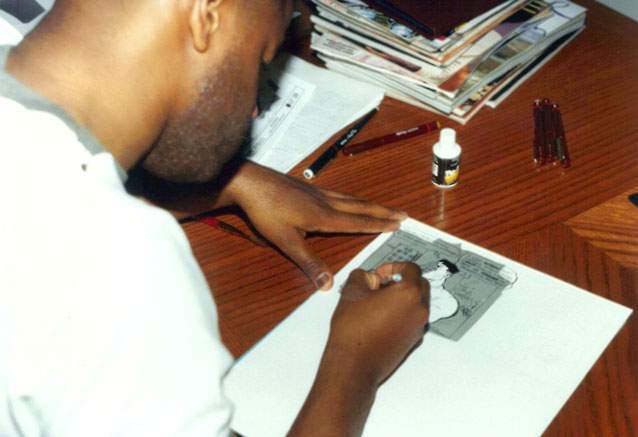
Dawud Anyabwile drawing "Brotherman" at his home, 1990
Once home, they called Sims and asked him to write a treatment.
"Working with Dawud and my other brother Jason was nothing new," says Sims. "We have always collaborated on projects growing up. All of my brothers had their own specific talents that complemented each other. So when the call came to work on what would eventually become 'Brotherman,' I naturally got on board."
At that point, Brotherman was just a generic character in one of Anyabwile’s sketchbooks who wore a hero costume with a "B" on his chest. Sims, who grew up influenced by the work of James Baldwin, Richard Wright and Harlem crime writer Chester Gould (best known as the creator of "Dick Tracy"), went home and immediately began working on a two-part story.
Two weeks later, he faxed it back.
"For us this was the beginning of a movement. We knew it was," says Anyabwile.
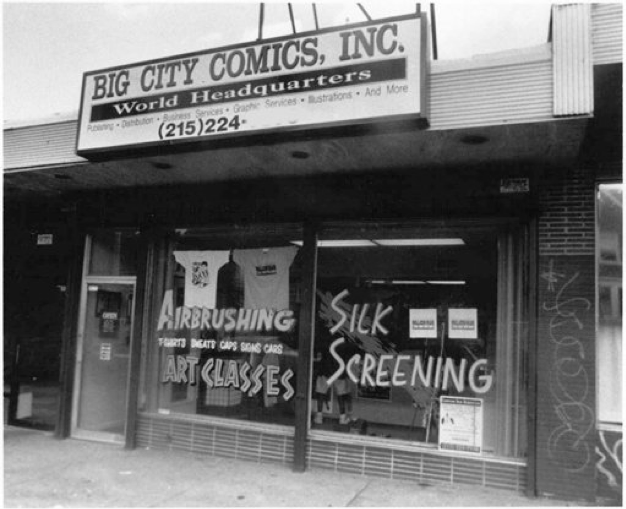
Big City Comics World Headquarters, Philadelphia, 1995
Success, then tragedy
On April 9, 1990, they returned to New York's Black Business Expo, only this time carrying copies of "Brotherman" printed by an independent printer they found in West Virginia — the first book in what would grow into the 11-issue series that follows Antonio Valor, a man on the side of moral justice, fighting to bring light back to the darkness and corruption that has taken over Big City.
"When I read Big City for the first time, I thought I had been there before in real life," says Fluker, who knew right away that a city with so many layers would work perfectly as a VR project.
"Through the engaging writing of Guy Sims, the reader is introduced to a civics lesson on how the city functions. You spend more time learning how city permits are processed, or how court procedures are adhered to, than watching Brotherman show up in his costume to save the day."
To understand Big City, you have to recognize the scope. With inflated street numbers (our hero Antonio lives on 550th Street), Big City is a sprawling metropolis with its core characters drawn to represent a black community that readers had yet to see on the page.
"Antonio Valor was to embody the concept of the man who is upright and about his word," says Anyabwile. "He personified in our minds the black men in our communities who were disciplined, caring and protectors of their families and communities, yet go to their grave with no songs written about them. We wanted to celebrate those who deserved it in mythology."
Once "Brotherman" was in the hands of readers, it became an overnight sensation.
“People felt a new exhilaration when they found 'Brotherman.' They felt like they finally had a true hero that was owned and operated by black people.”
"The stories came pretty easy," says Sims. "The first issues were developed in a tongue-in-cheek fashion. Since I had never written a comic book before, I modeled the first story after what I was familiar with. By issue #3, I realized that I had the freedom to construct the stories in my own way. The writing became a lot more robust, fun and culturally meaningful."
Media scrambled for interviews, and coverage ranged from CNN and Arsenio Hall to NPR's "Fresh Air" and CBS News. The brothers sold 40,000 books the first year alone, and by 1994 the number had hit 750,000.
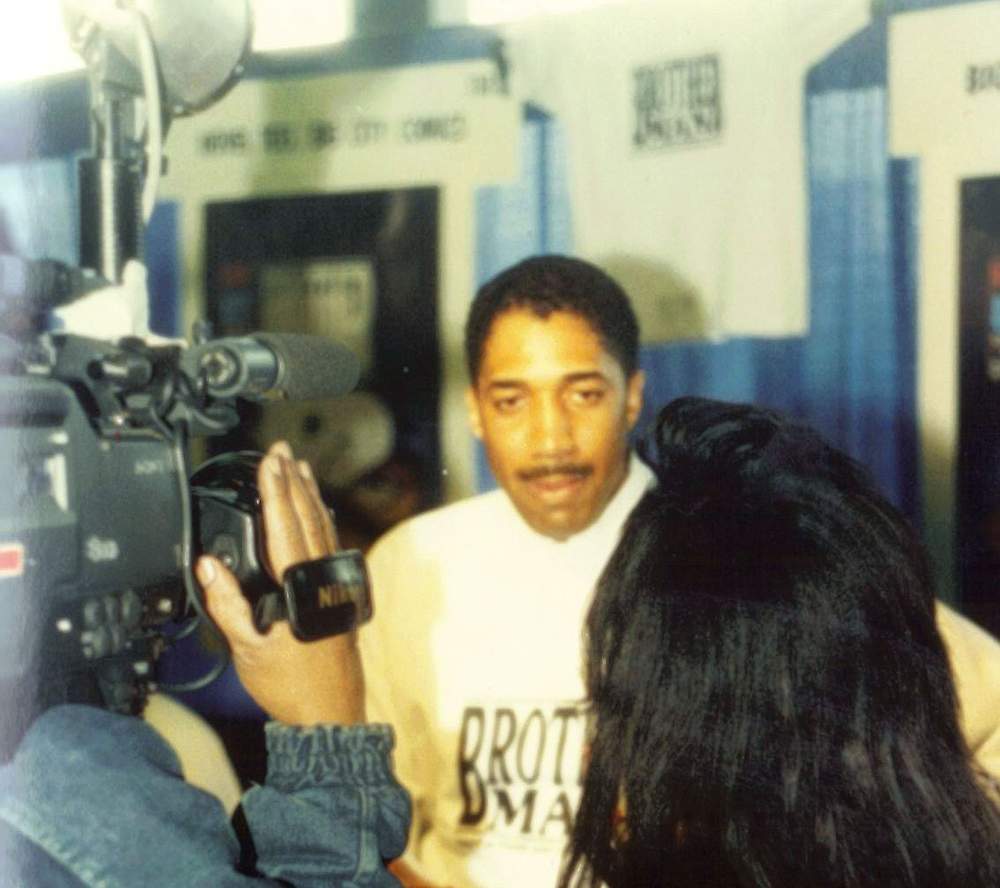
Guy A. Sims being interviewed by BET in New York City, April 1990
With "Brotherman" firing on all cylinders and more installments on the way, Anyabwile and Sims estimated they would hit one million sold by the end of 1995. It was everything they could have hoped for.
Then tragedy struck.
"Issue #10 was just released and my mother died that night. At that moment everything stopped," says Anyabwile.
Events, including their previously scheduled four-day stint at the Black Expo at the Javits Center in New York, were cancelled. Sales declined as the brothers were unable to produce the materials needed to meet the demand.
It was at that point their father stepped in and helped the brothers set up what would become the Big City Comics World Headquarters in Philadelphia in 1995, in honor of their mother. The aim was to use the space to teach art classes to youth of all ages, print their own merchandise and ultimately produce "Brotherman" #11.
"My father felt that my mom would want us to keep going, so he used a small portion of her insurance to help us obtain the deposit on the store," says Anyabwile.
Just as things were starting to turn around, their father suffered a relapse of lymphoma, after being in remission since 1988. He died of the cancer a few months later.
"When our parents passed away the operation came to a halt," says Sims. "Our parents were very involved in the building of Big City, so when they passed a major motivator and support system for our work was no longer there."
As the brothers grieved, Big City Comics was dissolved.
"I thought I would bring it back eventually," says Anyabwile. "I had no idea that it would be 20 years."
'Brotherman' returns, with a twist
Those interim 20 years became a time for both brothers to pursue other opportunities and build on their skills.
For Anyabwile, it meant a move to New York City, where he worked on two Pink Panther CD-ROM games, followed by a short stint at MTV Animation doing the layout art for the television show "Daria." He then relocated to Los Angeles to be a character designer for Klasky Csupo, creator of Nickelodeon’s hit shows "The Wild Thornberrys" and "Rugrats." Atlanta was the final stop, where Anyabwile joined Turner Studios serving as a production artist to music videos, commercials and game animations. All this while winning an Emmy along the way.
For Sims, the interim encompassed finishing a second master's degree and a doctoral degree while raising a young family. He published his novel and stories between classwork and eventual dissertation work.
Yet "Brotherman" was still on their minds. There was unfinished business.
In 2015, Anyabwile and Sims came together once more, this time to write the origin story for Antonio Valor — one that shows the influence of his parents' love and values. They were joined by colorist Brian McGee, who brought his own background in film and television. McGee’s unique and vivid coloring added another level of depth to the artwork after Anyabwile illustrated each scene.
The end result was the long-awaited 12th book in the series, "Brotherman: Revelation."
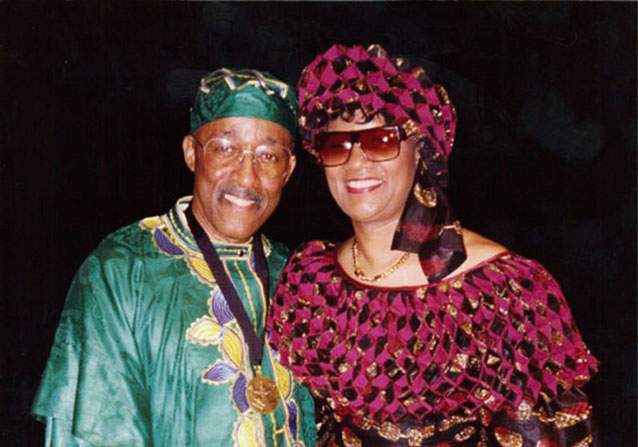
"Brotherman: Revelation" explores the loving influence of the superhero's parents, inspired by the comic book creators' parents, Dr. Edward Sims Jr. and Deanna Jones Sims.
As a reader and also a digital scholar, Emory's Fluker experienced a revelation of his own.
"I was inspired by several authors I encountered through my research; Samuel R. Delany, Octavia Butler, Junot Diaz, N.K. Jemisin. These authors created worlds with depth, and I wondered what it would be like to enter one of these worlds and immerse students in these worlds as well."
Thus began the Big City Maps Project, created by Emory's Center for Digital Scholarship in collaboration with Anyabwile, Sims, McGee and the university's Stuart A. Rose Manuscript, Archives and Rare Book Library.
Rather than only discussing a story's plot, character development and other narrative devices in the classroom setting, the Big City Maps Project introduces a platform that allows students to read a text, then experience the world of that text through sensory perception.
The interactive panoramic map is the work of Megan Slemons (GIS specialist), Joanna Mundy (digital project specialist), Arya Basu (ECDS visual specialist), Michael Page (ECDS geographer), Guy Sims and Anyabwile.
The process, which began in May 2017, had two parts. The first was using the existing map of the Big City Massive Transit System created by Anyawbile, then enhancing it so that it could be placed in the Tableau software. This meant including not only streets and highways but longitude/latitude coordinates for the city. Slemons even went so far as to create a more realistic sense of spatial relationships between land, water and population density.
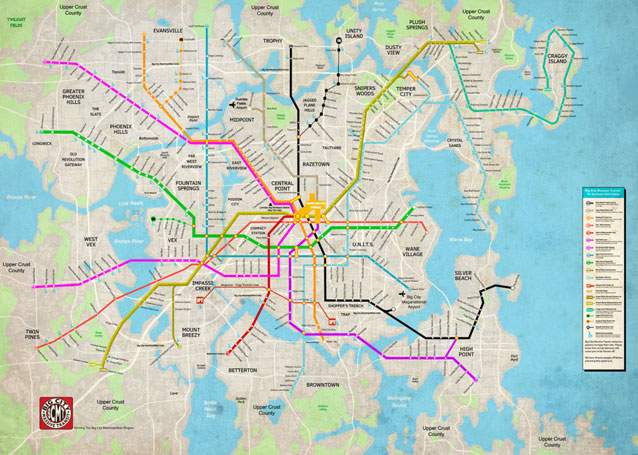
Explore the enhanced, interactive map of Big City.
"I reviewed the entire Big City Universe, identified 85 unique locations, and Guy Sims created fictional addresses for each location," says Fluker. "Joanna and I worked together to ensure that each of these locations is searchable on the Tableau map, and included annotations that can be scrolled over in the viewer."
What does this mean, exactly? When one of these locations on the map is selected, an image of the issue cover and the location within the comic book appears on screen.
"I had high hopes for the project in that I wanted to create an interactive map that works like a Google map," says Fluker. "I remember consulting with Arya about this first to see if such a thing were even possible. Having done several projects like this before (Envisioning Baroque Rome, Atlanta Explorer), it was Arya's idea to create panoramas of the street level and have an artist draw them rather than 3D model the entire city."
Making street-level scenes come to life began with Page and Fluker identifying locations in the greater Atlanta area similar to scenes in the comic book, then taking 360-degree panoramic photographs of the locations and giving them to Anyabwile to use as reference for depth perception and placement of light and objects.
Anyabwile imitated the digital distortion of the 360-degree camera to produce panoramic images of Big City.
Basu then took these 360 images and stitched them together using the Unity game engine software. He even created a weather system that fuses with the 2D image created by Anyabwile.
Take a 360-degree look around the streets of Big City.
3D modeler Ian Burr was also able to model the interior of the main character's home.
"Presently, we have kept it simple," says Fluker. "You can view the sun shining down from the sky. However, in the next phase of the project, we could make it snow, rain, you name it. Three of these addresses can be found on the Tableau map and virtual reality goggles can be used to view the street-level scene from the comic book."
Tour a 3D model of Antonio Valor's home, based on scenes in the comic.
Inspiring real-life superheroes
By using this immersive approach to storytelling, Basu hopes readers will be able to more readily imagine themselves in the helping role of a superhero.
"When I was growing up, I'd think, 'What did Batman do?' Every little step in the right way counts," says Basu.
Working with Pellom McDaniels, curator of African American collections at the Rose Library, Fluker advised on the development of a collection of new black comic books. "The Rose Library has one of the top collections related to black comic books in the nation," according to McDaniels.
“Pellom made it possible for us to share this project at the Decatur Book Festival in September," says Fluker. "One of the goals that he has been working on is how to engage youth to read more, as well as engage more with history through archival collections."
This project has the potential to do both, and with McDaniels' help, they are devising ways in which the tool they have developed at Emory might be used on the K-12 level.
"My mother was probably the first to use 'Brotherman' in the classroom in the early '90s. She always emphasized education and helping young people. 'Brotherman' was the embodiment of that in a rough and unorthodox manner," says Anyabwile.
What began as a creative effort among brothers to bring a black superhero into the world has, nearly 30 years later, revolutionized the space yet again. Only this time, they are using technology to change the way we approach storytelling, leading us to imagine how literature can be experienced by readers of tomorrow.
"To know that it is now associated with a university such as Emory is something I know would make my mother and father proud," says Anyabwile.
"In the end, I hope this project encourages people to think and act creatively," says Guy Sims. "They should see that they have the ability to create concepts, images and experiences that may find their way to influence the world."
The goal at the Center for Digital Scholarship is to do exactly that.
Visit the Big City Map Project
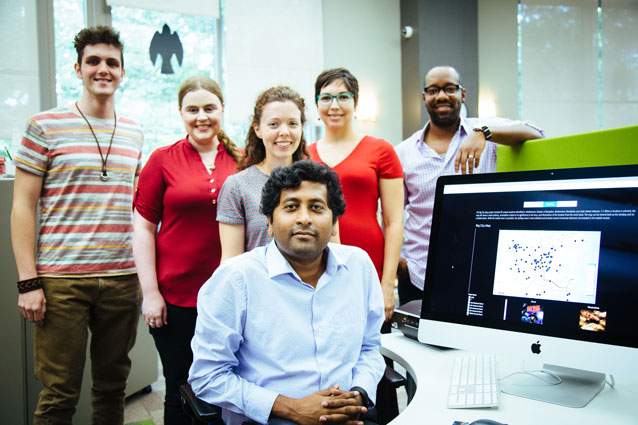
The Emory Center for Digital Scholarship team: (back, left to right) Ian Burr, Joanna Mundy, Megan Slemons, Anandi Silva Knuppel, Clint Fluker;
(front ) Arya Basu
Meet the "Brotherman" team at the Decatur Book Festival
For more, be sure to catch Dawud Anyabwile, Clint Fluker and the entire ECDS Big City team at the Decatur Book Festival for their panel "Big City Maps: Using Virtual Reality To Build Fictional Worlds" on Saturday, Sept. 2, at 12:30 p.m.

